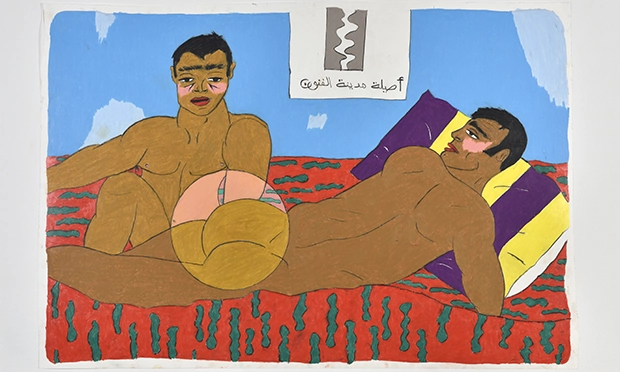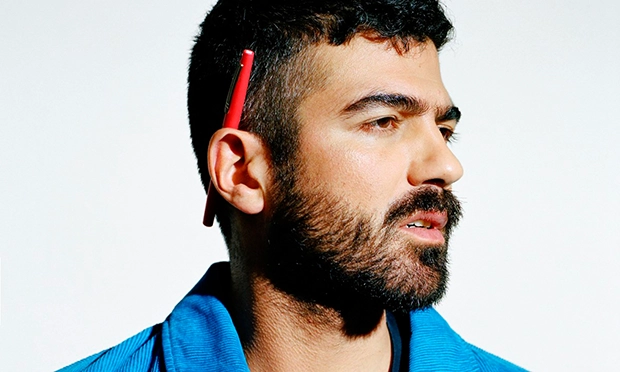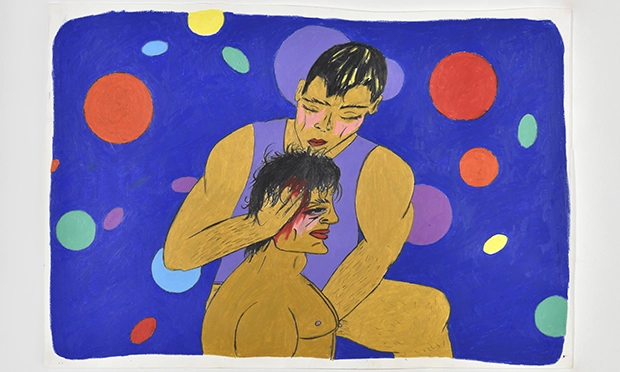Barbican to host first major UK exhibition of Moroccan-born artist Soufiane Ababri

Bedwork, 2023. Copyright: Soufiane Ababri. Photograph: Rebecca Fanuele
The Barbican’s famous named-as-it’s-shaped Curve Gallery will play host next year to the poignant works of Soufiane Abibri.
The Moroccan-born artist was struck when he saw the venue’s “emblematic” crescent design, which reminded him of the curling shape of the Arabic letter ‘zayin’ (ز).
‘Zayin’ is the first letter in the word ‘Zamel’, used as a slur against gay men.
‘Zamel’ derives from ‘Zamil’, meaning close or intimate friend, and in the Mahgreb region of northwest Africa, the buzzing sound of the letter ‘z’ is used maliciously to evoke the slur without actually voicing it.

Multidisciplinary artist Soufiane Ababri. Photograph: Noel Quintela
Ababri takes the transformation of ‘Zamil’ to ‘Zamel’ as the starting point to explore the ways in which language has been coded and weaponised.
He said: “An artist is always in tension with the space offered to them, and I hope to use the structure of The Curve to reflect on social determinism – how my own experiences of harassment and the insult ‘zamel’ have shaped my response to this space.
“I asked myself: is suspicion a necessary element in a critical discourse? How could I use this commission to question relationships of power and domination, whilst making space for joy and a celebration of intimacy?”
The answer to that is through activism inspired by art from the past – particularly a 13th-century illustration by Yahya ibn Mahmud al-Wasiti of a tender moment between two men holding hands and looking into one another’s eyes.
Ababri’s work cites sources from sociology and philosophy in examining western gay subculture, and often draws on real and fictitious encounters with other men.

Bedwork, 2023. Copyright: Soufiane Ababri. Photograph: Rebecca Fanuele
In this exhibition, titled Their mouths were full of bumblebees but it was me who was pollinated, he pulls from both the western and non-western queer experience to challenge traditional respresentations of intimacy and sexuality.
In its place, he forges an alternative canon that reverses the historic marginalisation of non-heterosexual relationships.
Ababri’s work ranges from drawing and sculpture to installations and performances, and one of the latter, designed with the Curve Gallery’s shape in mind, will look at the power that architecture can have in influencing people’s behaviour.
The show will also examine the role that clubs have played as sites of resistance for the queer community, and how dance and music have been used as tools for personal and collective emancipation.
Humour and irreverence are ever-presents in Ababri’s output – a subversion of the strained reality of living and working in Morocco, where homosexuality remains illegal.
Shanay Jhaveri, head of visual arts at the Barbican, said: “We are delighted to present the first exhibition of Soufiane Ababri’s work in a UK institution.
“His show provocatively responds to the distinctive architecture of The Curve, reminding visitors of the continued vulnerability of queer communities, but also of their resilience, strength and the joy found on the dance floor.”
Soufiane Ababri: Their mouths were full of bumblebees but it was me who was pollinated will run from 13 March 2024 until 30 June 2024 at the Barbican’s Curve Gallery.
For more information, visit barbican.org.uk.
